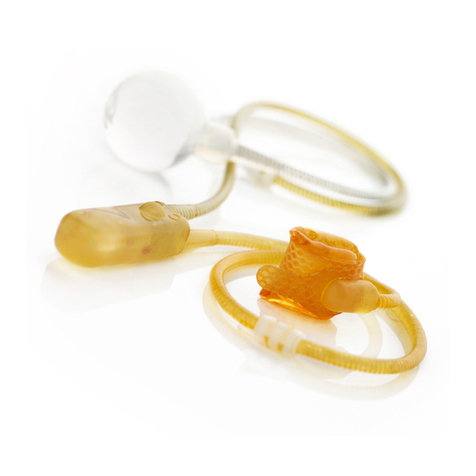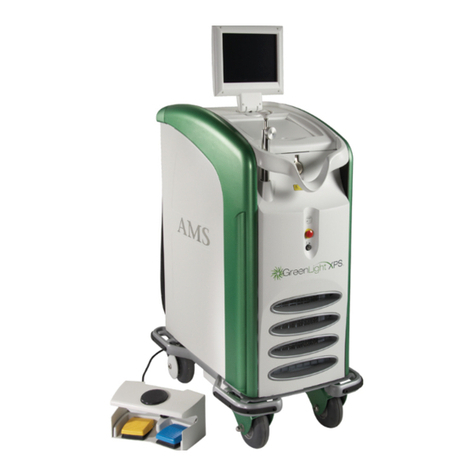
- 10 -
The following instructions are intended as a guide for
the surgeon. Various surgical techniques can be used
to implant the AMS penile prosthesis. The instructions
here represent one of these techniques.
CAUTION: This device is to be used only by
physicians who are knowledgeable regarding the use
of inflatable penile prostheses. This manual is not
intended to be a complete reference.
preoperatIve setup
Instruments
The hospital should provide those instruments normally
required for a urological surgical procedure.
In addition to the AMS 700 Penile Prosthesis
components, you will need the following sterile setup:
9Sterile normal saline (filling and flushing solution)
9Two 60 cc and Two 10 cc syringes (for filling
and flushing prosthesis components)
9Eight mosquito hemostats (for clamping tubing
when prepared with shods)
9One pair of clean, sharp scissors for trimming
tubing
9Hegar dilators (7 mm-14 mm), or urethral sounds
(21Fr-42Fr) (for dilating corpora cavernosa)
9Furlow Insertion Tool (for measuring and
passing pulling sutures through glans)
9AMS Quick Connect Assembly Tool (only
needed for sutureless window connectors)
9AMS 700 with MS Pump Accessory Kit (see
description that follows)
9AMS 700 with MS Pump Rear Tip Extender Kit
9Cavernotomes (optional)
9AMS Tubing Passers (optional)
9AMS Closing Tool (optional)
9SKW Retractor System (optional)
The AMS 700 with MS Pump Accessory Kit for the AMS
700 with MS Pump Product Line contains the materials
necessary for one implant procedure. It includes:
Special Purpose Needles
9Two 15-gauge disposable blunt needles (for filling
components)
9Two 22-gauge disposable blunt needles (for
flushing air and blood from tubing immediately
before a connection is made)
9One pair Keith Needles (for transporting cylinder
pulling sutures through glans)
Note: The Keith needles are “lightening bolt” shaped -the
bend is normal.
Hemostat Shods
9Four 13 cm lengths of tubing (for covering tips of
hemostats used to prepare components—tubing-
shod hemostats help protect prosthesis from tubing
damage)
Tubing Connection Accessories
9Four straight AMS Quick Connect Sutureless
Window Connectors
9Three right angle AMS Quick Connect
Sutureless Window Connectors
9One locking ring holder with eight collets
9Three straight suture-tie connectors
9Two right angle suture-tie connectors
9One tubing plug (to prevent fluid from entering
or leaving the prosthesis during revision surgeries)
Documentation
9One Quick Connect instructions for use brochure
9One Patient Information Form (PIF)
9One mailing envelope (for returning the
completed PIF to AMS)
9One patient ID card
AMS Proximal Tool
The AMS Quick Connect Assembly Tool must
be ordered separately. It is a reusable stainless steel
instrument used to assemble the connectors.
The AMS Quick Connect system may be used for new
systems or when all previously implanted components
are removed and replaced with new components.
O R I





























